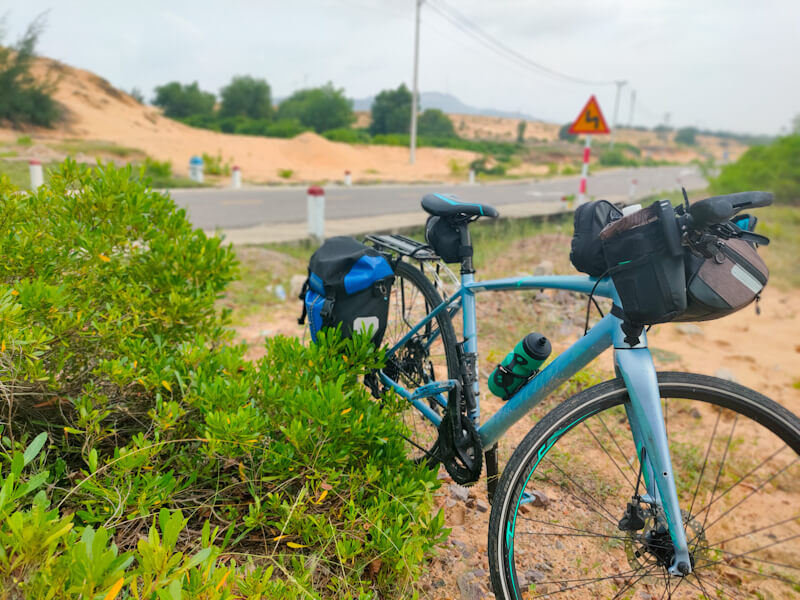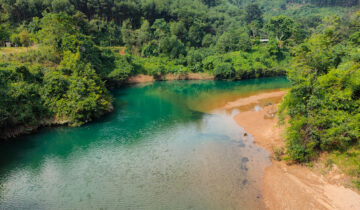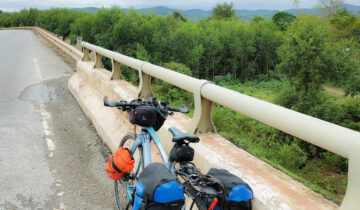The coastal road between Tra O Lake and Quy Nhon a route that made me fall in love with cycle touring all over again, picking me up out of a storm-battered slump.
It had everything: peaceful villages, windswept lagoons, mountains, sea, sand dunes, windy lanes and deserted epic highways.
I’d made the decision to jump ahead by bus to the mid-sized beach capital Quy Nhon due to an issue with my pannier and another storm coming. But instead of pressing on south, I found a local bus able to drive me 100 kilometers down the highway (yes back the way I came).
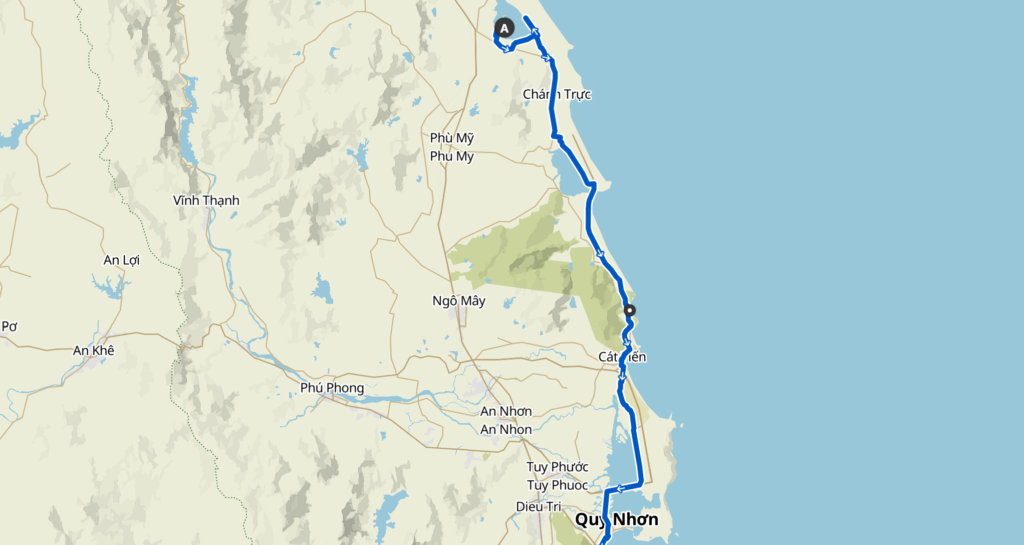
Cycling Tra O to Quy Nhon
Dam Tra O Lake is exactly the kind of off-the-beaten track place you want to find yourself in. It even has a nice homestay, though this was sadly closed due to storm damage when I came through.
What looks like a straightforward lake on the map is a bit more complicated in real life (at least in wet season) and I cycled over a slightly flooded causeway to get to the other side. Passing through in the rainy season of October 2022, there is water everywhere.
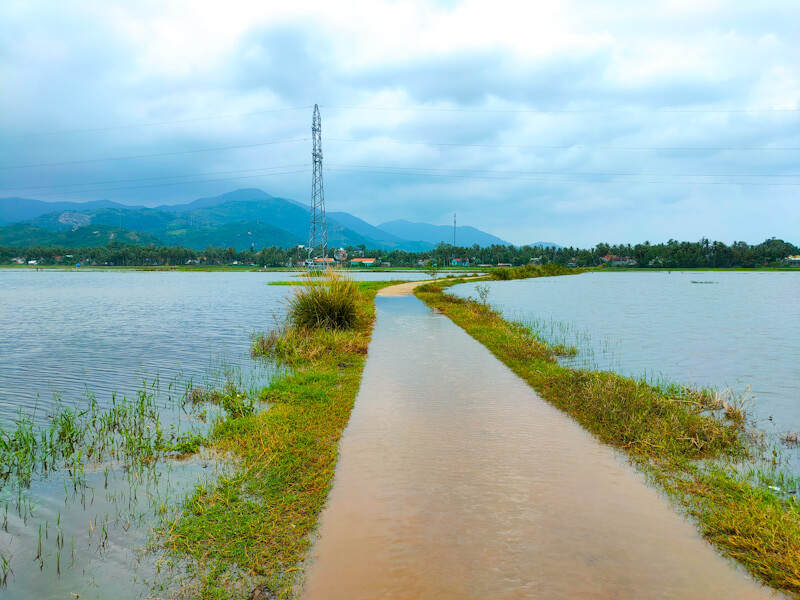
Tucked in between the sleepy hills were quiet villages and fields where nothing stirred. I loved it, and cycled a little way up around the eastern side of the lake to visit a cafe.
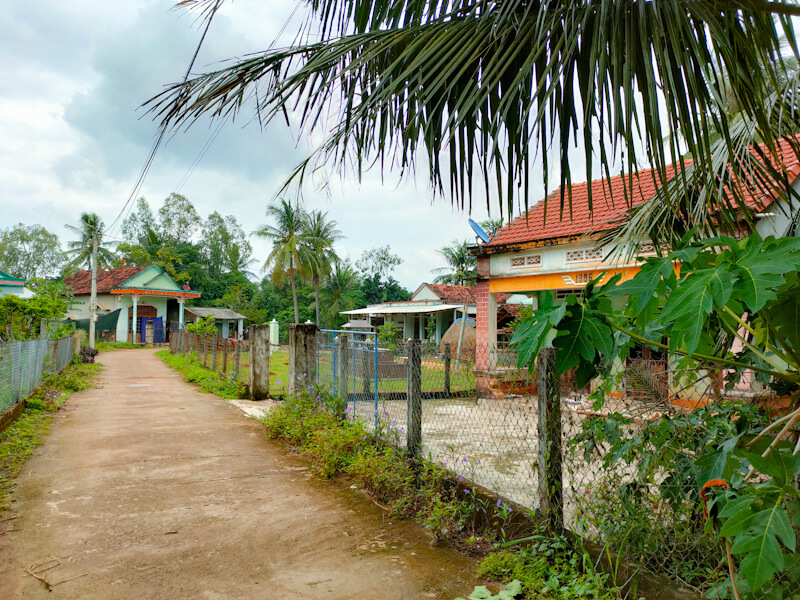
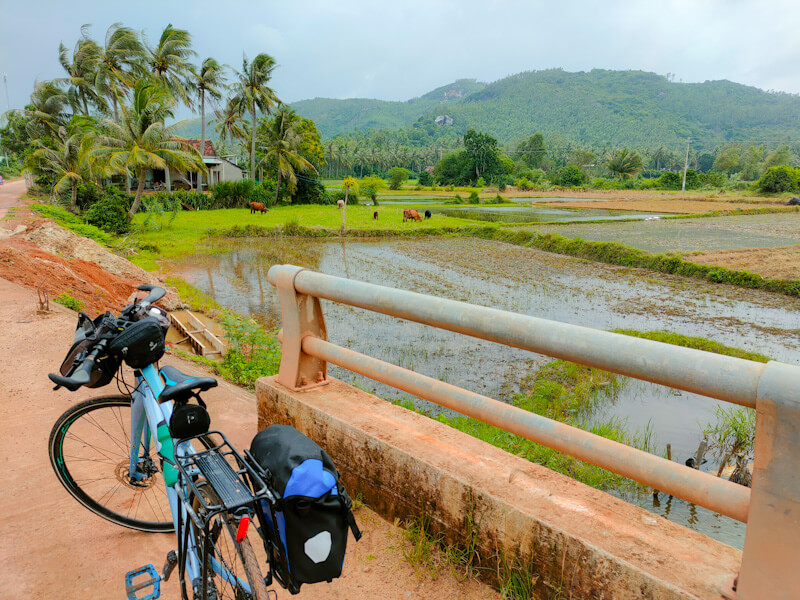
Passing down more back roads and alongside a lagoon, eventually my route took me on to minor highway 639 where I sailed on the prevailing tailwinds straight down the coast. This was a quiet, rural, pleasant and easy road to cycle and I regretted the section I had skipped further north. Oh well.
There are any number of beaches along this route and I stop off for a few minutes at Cat Hai, which is an enormous swathe of sand set between cliffs at the village of Tan Thanh. But the wind is so strong I don’t stay for long, pressing on along a section of road squeezed tightly between hills and the sea.
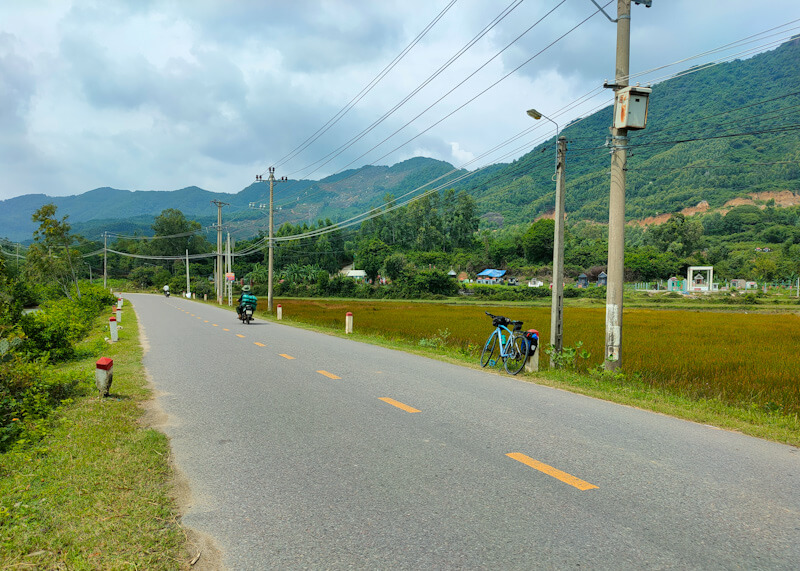
Climbing up over a small, gusty pass the road plunges dramatically into the town of Cat Tien, famous for a vast religious site, the Linh Phong- Ong Nui temple. The temple gates offered a place for me to scoff down street food steps while gazing straight up the temple’s 600 intimidating steps. This was one temple I would not be visiting today.
The Eo Gio Peninsula
Here, I said goodbye to Road 639 and jumped on to Highway 19B through the sand dunes of the Eo Gio peninsula. Like many of Vietnam’s coastal highways, the road is massive – and completely deserted, perhaps waiting for the tourist season.
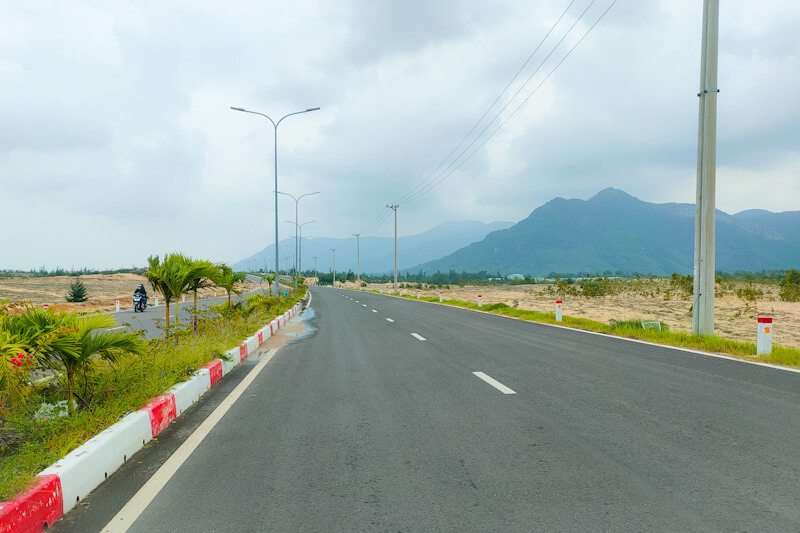
A far cry from the cozy countryside of the lakeside areas, I loved the epic, wild west feel of this highway, still hugged by mountains.
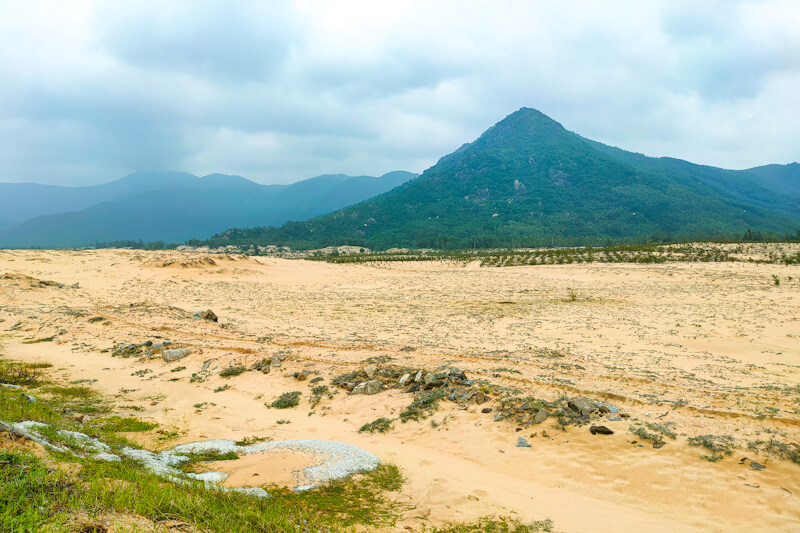
Another reason for heading down this peninsula is to ride the Thi Nai bridge, a tourist attraction in itself and definitely the most spectacular way to enter the city. The bridge is 2.5 kilometres long and probably not for the faint hearted if the winds are up. Which they were on the day I rode through, hence the lack of photos.
In any case, a fitting way to end the journey and ride triumphantly into Quy Nhon.
The triumphant entrance was somewhat spoiled by the sheer size of the city, and – with my hotel located on the far side – it was a bit of a pain to hustle through the traffic of the busy residential streets. To be fair, I refused as usual to take the most direct route, preferring to explore some of the small back streets.
Even this short exploration cemented Quy Nhon again as one of my favourite cities in Vietnam, a place to balance out the bike riding with people-meeting and street-food-sampling.


